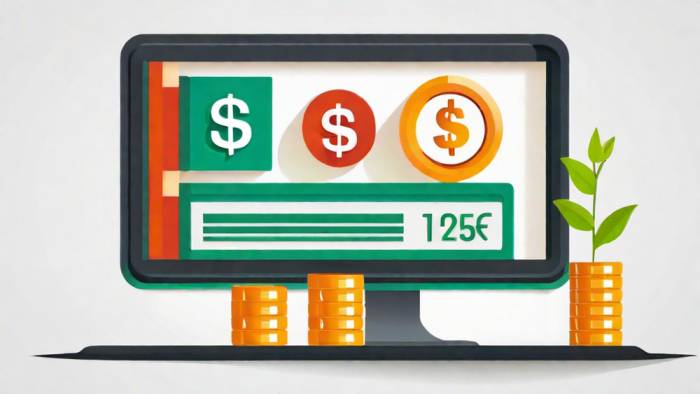If your website is looking outdated or isn’t converting visitors well, a website redesign may be in order. But what can you expect to pay for this project? Website redesign cost can vary widely based on your needs and goals. In this article, we’ll break down the typical costs and factors that influence website redesign pricing.
What is a Website Redesign?
A website redesign involves changing the look, layout, content, and/or functionality of an existing website. Businesses may want to redesign their websites to:
- Update the visual design for modern appeal
- Improve mobile responsiveness
- Add new capabilities or features
- Optimize site speed and conversion rates
- Migrate to a new CMS platform
- Reflect a brand refresh
The goal is to create an improved user experience that better achieves the site’s goals, such as higher sales or lead generation.
The positive impact of a successful website redesign is significant.
- User Engagement: A website that looks good and is easy to use grabs people’s attention. When visitors like what they see, they stay longer and are more likely to return and become regular customers.
- Conversions: A streamlined and intuitive website design enhances the likelihood of converting visitors into customers. Improved navigation and compelling calls-to-action contribute to a smoother conversion process.
- Brand Image: A website is a digital storefront influencing how users perceive a brand. A fresh and attractive design communicates professionalism, reliability, and a commitment to staying current—positively impacting the brand image.
Factors that Influence Website Redesign Cost
Several key factors affect the overall cost to redesign a website:
Website Size and Complexity
Larger websites with extensive content and complex functionality are generally more expensive to redesign than simpler, brochure-style sites. The amount of time and effort needed for discovery, planning, design, development, and migration increases for complex projects.
Design and Functionality Needs
The desired extent of changes to site design, layout, and features impact website redesign cost. Redesigns range from surface-level visual updates to full-scale overhauls with new functionality. More significant changes equal higher price tags.
New Features and Integrations
Adding major new features like custom forms, user logins, interactive elements, complex databases, or third-party integrations increases web development efforts and costs. The more features you want to build in, the higher the price.
Platform or CMS Change
Migrating an existing website to a new content management system—for example, switching site builders from WordPress to Drupal—can add engineering costs for theme customization, content migration, testing, and launch.
Location of Development Team
Websites redesigned in higher cost-of-living areas or countries will generally have higher price points. Outsourcing development overseas can provide savings on website redesign cost.
Typical Website Redesign Cost
Website redesign cost can range from a few thousand dollars for minor updates to over $100,000 for enterprise-level projects. Some typical cost ranges are:
- Basic Redesign ($3,000 – $8,000): A simple refresh of website visuals, content, and basic SEO improvements.
- Medium Redesign ($10,000 – $20,000): Major visual overhaul with improved UI/UX design, new page templates and partial content migration.
- Large/Enterprise Redesign ($30,000+): Full functionality and design transformation. Significant new features, complex integrations, and complete content migration.
Let’s break down what goes into these typical budgets
Cost Breakdown of a Website Redesign Project
A website redesign involves several key phases, each with associated costs:
Discovery and Planning – 10-15% of total budget
Thorough discovery and planning ensures the project starts off right. Activities include:
- Stakeholder interviews to understand business goals, user needs, and pain points.
- Gathering requirements for design, content, features, and technology.
- Defining the scope, priorities, constraints, workflows, and timelines.
- Creating sitemaps and content inventories detailing all existing pages and assets.
- Researching trends, competitors, and target users.
Strong planning minimizes missteps down the road.
Information Architecture – 10-15%
Information architecture establishes the structure and strategy for content:
- Site mapping to diagram the pages, navigation, and site hierarchy.
- Wireframing to layout page content and basic interface.
- Copy strategies for optimizing SEO and conversion.
- Metadata planning for findability and accessibility.
- Content gap analysis comparing old vs new site.
IA ensures a user-friendly content foundation.
Design – 15-20%
The design phase involves bringing the visual and interactive elements to life:
- Style tiles to explore branding aesthetics and graphic styles.
- Page layouts and wireframes for interface and interactions.
- Visual mockups for presenting design concepts.
- Style guide creation to guide design decisions.
- Prototyping key pages to simulate the user experience.
- Design system development for maximum consistency.
Thoughtful design is key for site appeal and usability.
Development – 25-40%
Development transforms the designs into a working website:
- Front-end engineering of designed templates and assets.
- Back-end development of custom features, integrations, and applications.
- Content implementation into the CMS framework.
- Programming complex functionality and animations.
- Integration with third-party software.
- Database development and connections.
Development realizes the full vision.
Testing and QA – 10-15%
Testing and QA identifies issues before launch:
- Functionality testing across interfaces and features.
- Cross-browser and device testing for responsiveness.
- User testing with target demographics for feedback.
- Stress testing for performance under heavy loads.
- Fixing bugs and defects uncovered during testing.
Thorough testing ensures a smooth user experience.
Migration and Launch – 10-20%
The launch phase brings the redesigned site live:
- Migrating and updating site content from old to new.
- Implementing 301 redirects for changed URLs.
- Configuring hosting, security certificates, and domains.
- Creating launch plans and rollout schedules.
- Providing training and support during the transition.
A structured launch prevents disruption.
Together, these phases deliver an impactful website redesign tailored to your business goals. Careful budgeting for each step leads to a successful outcome.
Website Redesign Cost by Website Type
Website redesign budgets can vary significantly across different industries and site types based on their unique needs.
E-commerce ($15,000 – $50,000+):
E-commerce sites require robust functionality for product catalogs, shopping carts, payment processing, and order management. Custom features and integrations drive up redesign costs.
Service-Based Businesses ($5,000 – $15,000):
Redesigns for service websites like consultants, agencies, or health providers may only need improvements to informational content, visual branding, and lead capture forms.
Blog/Publishing Sites ($3,000 – $12,000) :
Redesigns can focus on better content presentation, readability, and advertising placement without major functionality needs, keeping costs on the low end.
Directory Sites ($10,000 – $30,000):
Sites like listings for local businesses, jobs, events, etc require the development of extensive database-driven functionality for submissions, profiles, searches, and more.
Nonprofits ($8,000 – $20,000) :
Lower budgets of nonprofits limit the scope, but foundational redesigns can improve messaging and donor/volunteer engagement.
Enterprise Corporations ($50,000+):
Large organizations need complex integrations, personalized dashboards, multilanguage support, enterprise-grade security, and global scalability.
Higher traffic volumes, security needs, global reach, and complex integrations associated with certain industries and site types correlate with increased redesign costs compared to simpler informational websites. Carefully evaluating unique project requirements is necessary for an accurate cost estimate.
Ways to Reduce Website Redesign Cost
Here are some tips for controlling website redesign costs:
- Have Clear Goals and Requirements: Well-defined goals and specs allow for more accurate scoping and quoting. Ambiguity leads to misaligned expectations and budget overages.
- Use Website Templates and Themes: Leverage existing templates, themes, and site builders like WordPress to reduce custom design/development needs.
- Minimize New Functionality: Don’t add complex features that create engineering overhead. Focus on simplicity.
- Utilize Internal Team: If Possible, Your in-house design and development team can handle portions of the project in-house to reduce outsourcing costs.
- Consider a Staged Approach: Break the redesign into phases for a smaller initial launch focused on high-impact changes.
When To to Invest More
While limiting scope contains costs, there are times when investing more upfront pays dividends:
- For Major Functional Changes: Don’t cut corners on complex integrations or custom features that deliver real business value.
- For Complex Integrations: Allocate adequate resources for specialized implementations like ERP or CRM systems.
- For High Traffic Volume Sites: Heavily trafficked sites require robust infrastructure and engineering.
- For a Brand Relaunch: A brand transformation initiative warrants an all-encompassing redesign.
Key Takeaways
As you budget for your next website redesign, keep these tips in mind:
- Set a Realistic Budget Based on Needs Account for the factors that increase website redesign costs instead of blindly estimating.
- Balance Cost With Value Delivered Focus spending on changes tied to business goals and expected ROI.
- Maintain Core Functionality Prioritize a smooth transition over a total overhaul, if possible.
- Take a Phased Approach Get incremental value by breaking the project into multiple releases.
Investing in a thoughtful website redesign ultimately delivers dividends through higher customer satisfaction, reduced operating costs, and increased revenues. With smart budgeting and planning grounded in business needs, you can execute a successful website refresh without breaking the bank.


